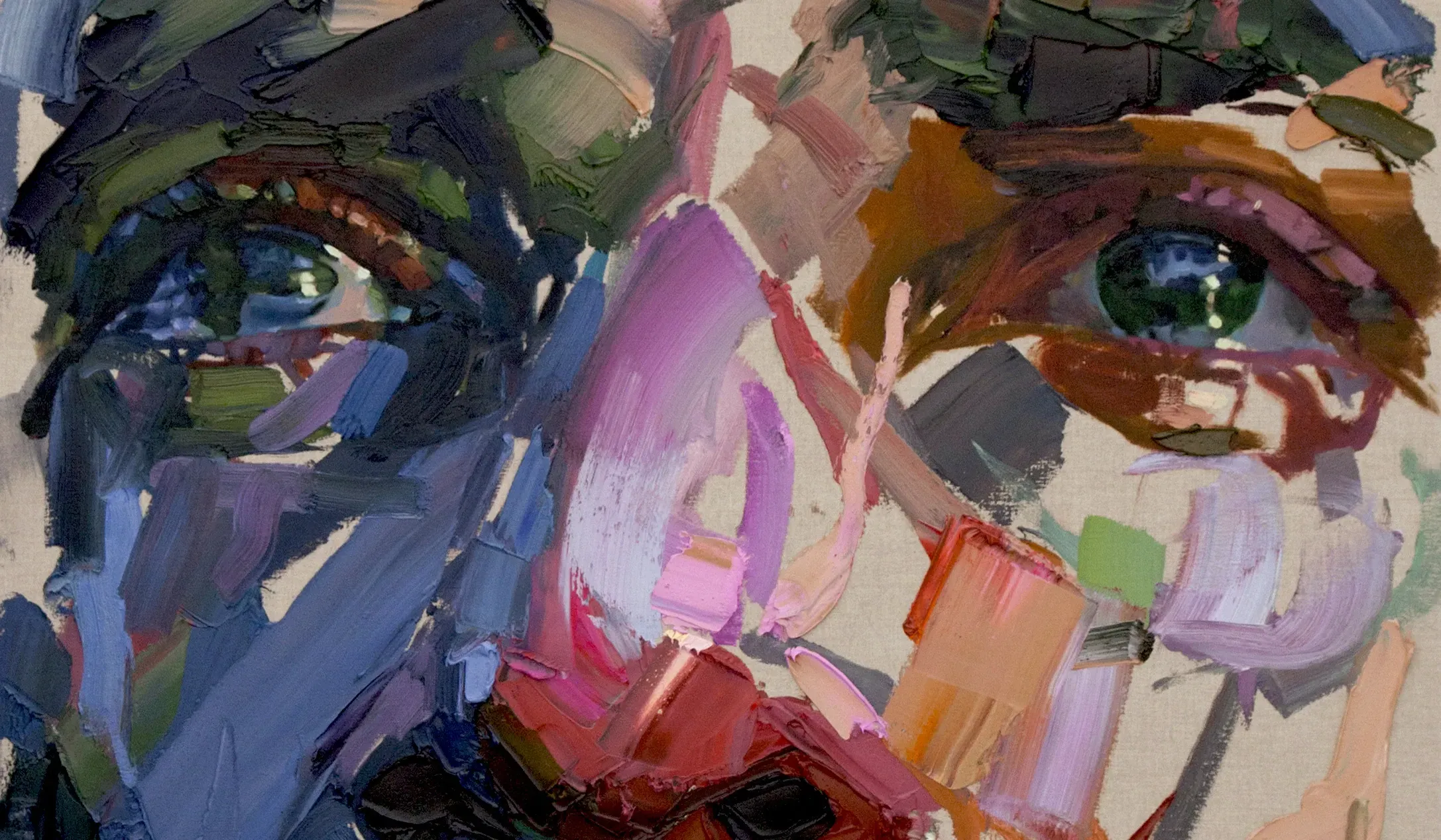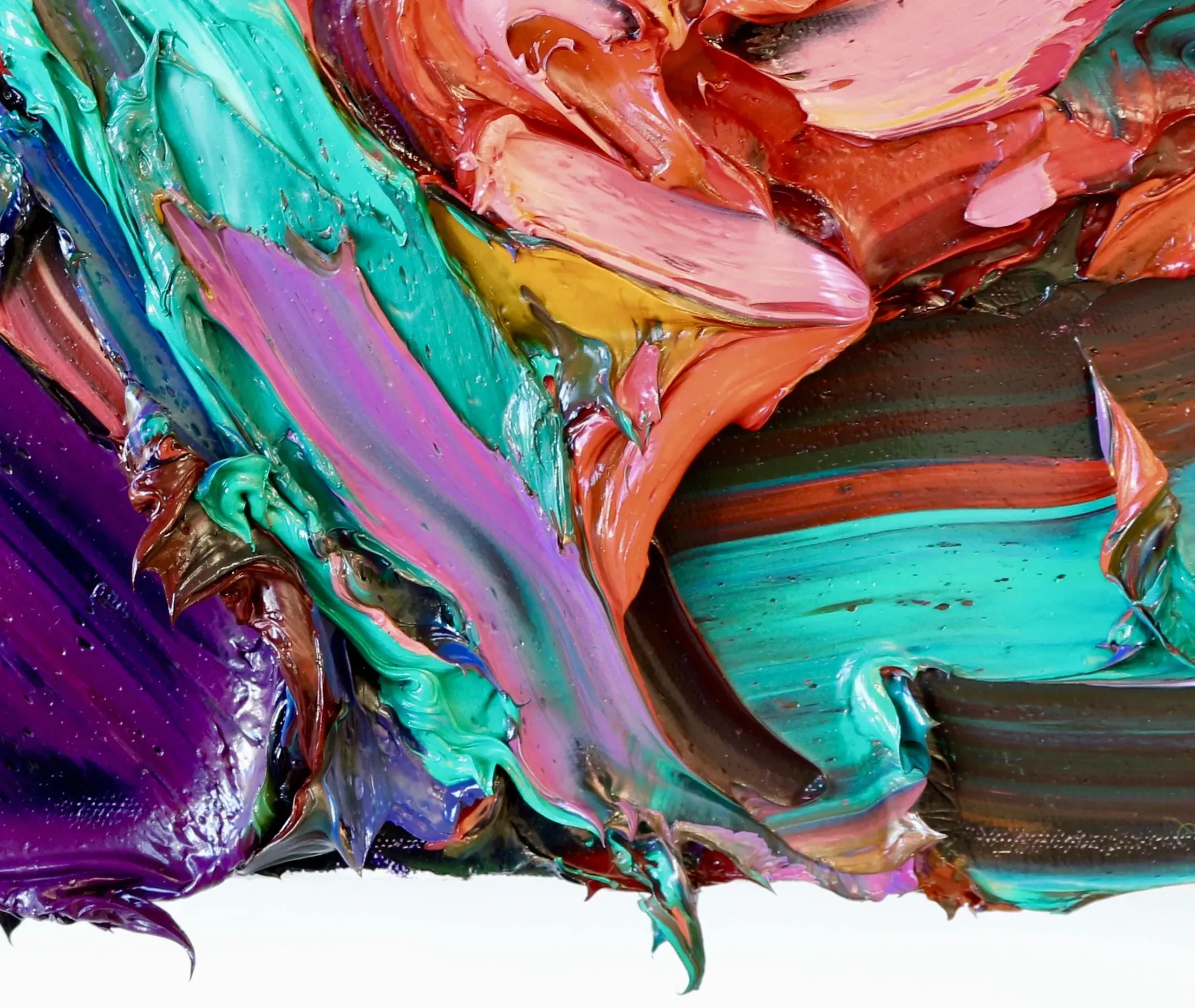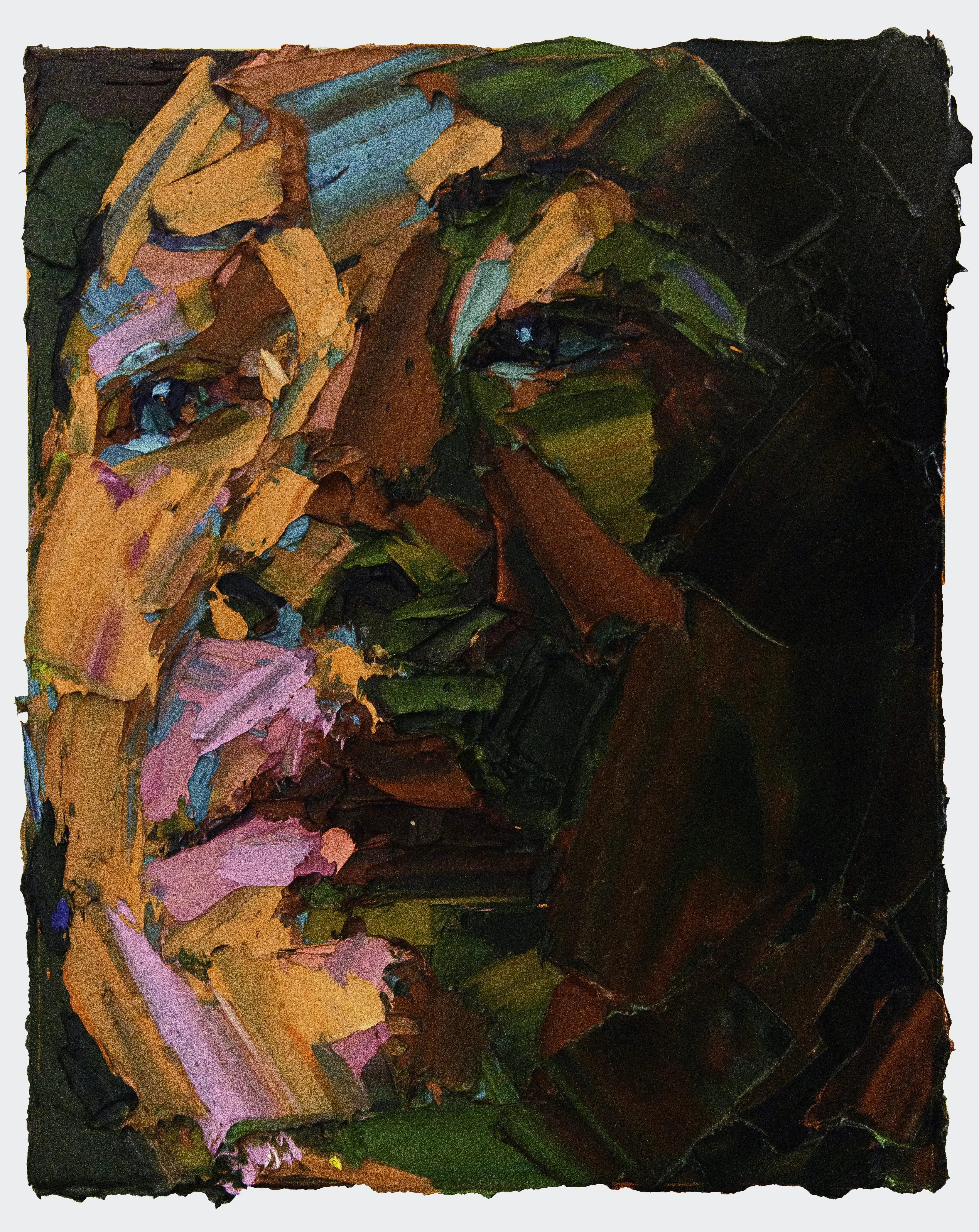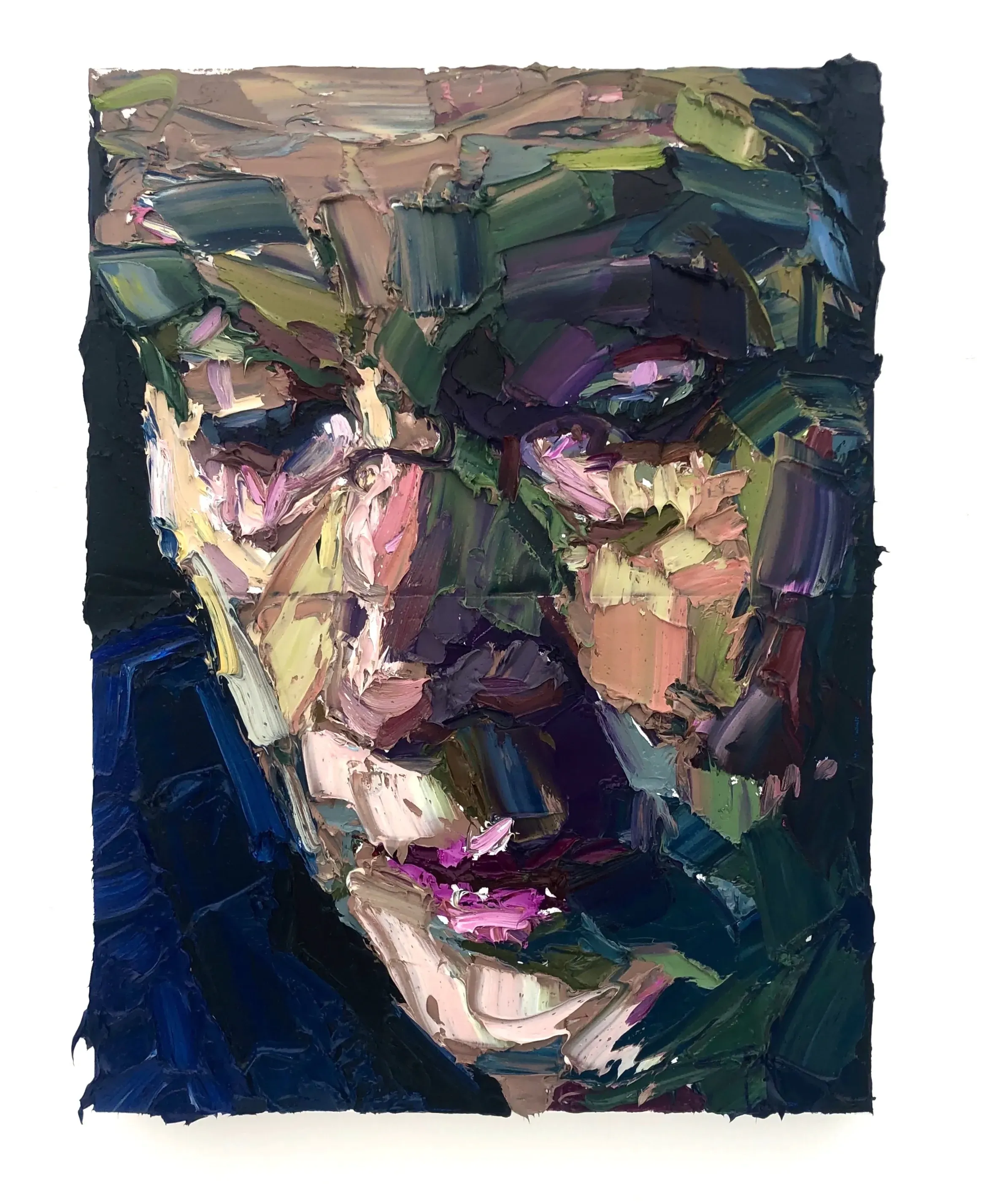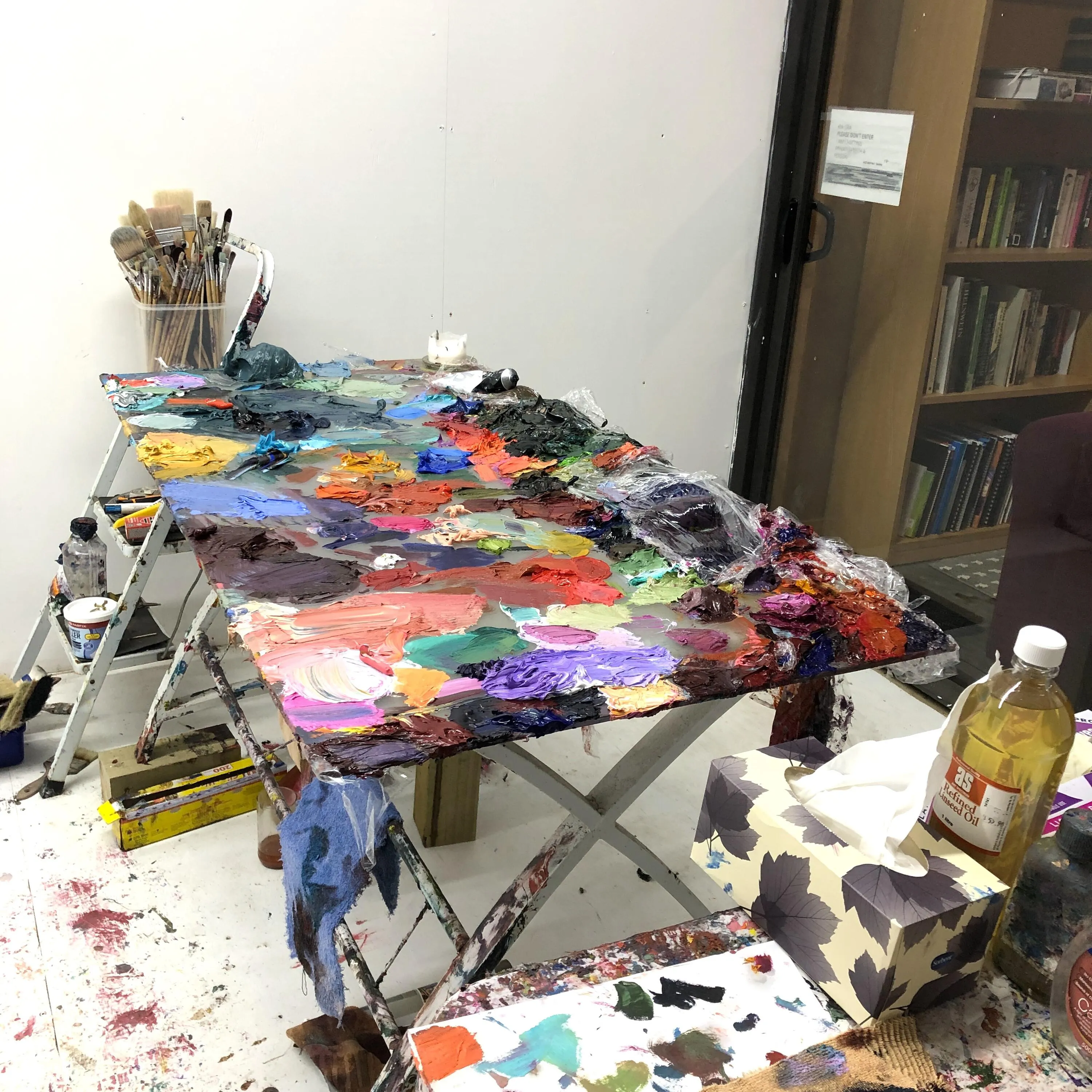Finding Trolove
Written by
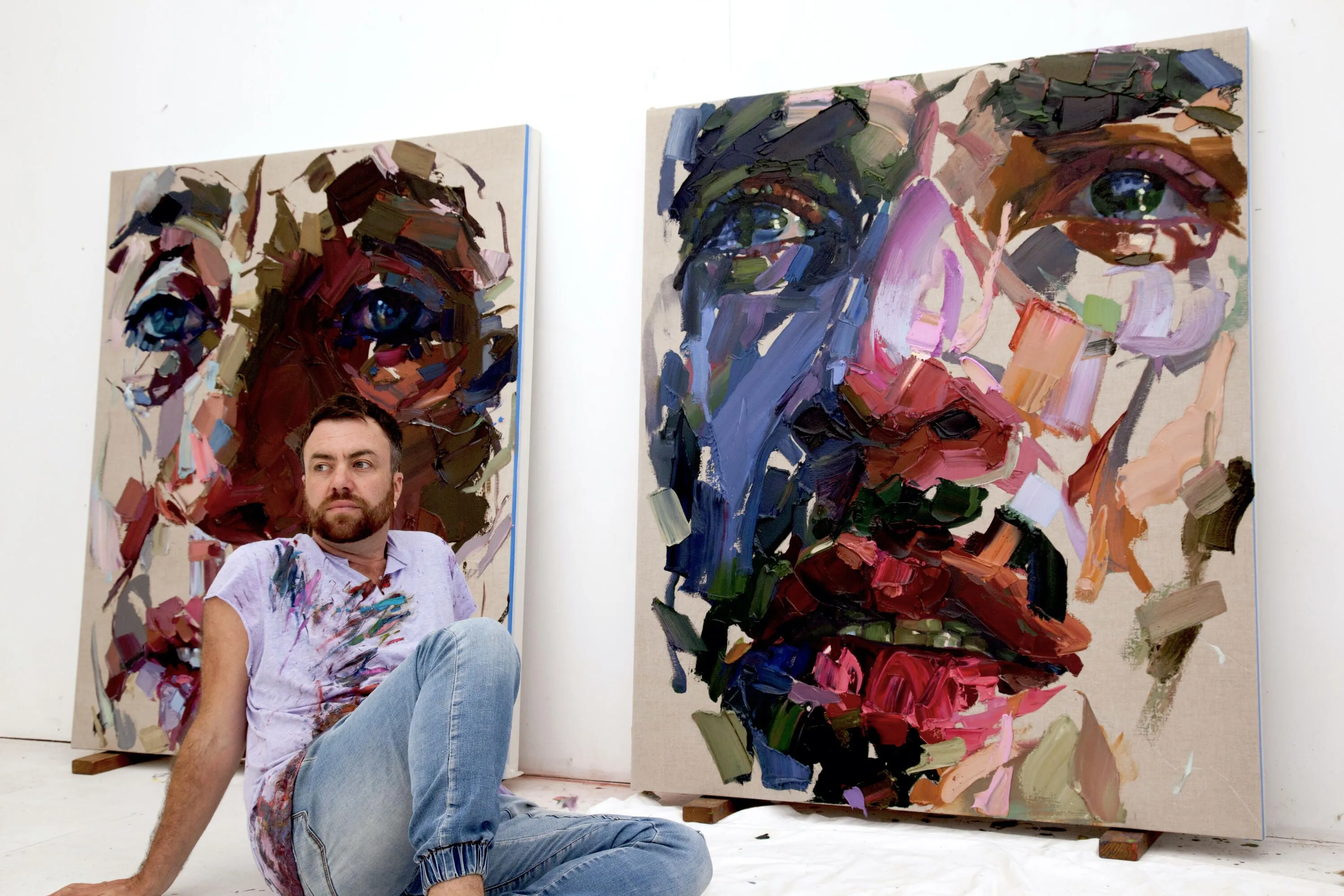
Jack Trolove is a painter of emotions.
The canvas has been attacked by a thickness of paint so artfully applied that it is hard to separate the body that emerges from the body of the artist. There is an abnormal amount of confidence in the matter and where the paint ends up.
“My work as a painter is literally trying to find feeling. It’s as simple and as complicated as that,” Trolove declares.
“Looking for feeling, pushing paint around, making marks until sensations start vibrating the surface. It’s like a kind of choreography for feeling-finding; moving with hands, knives, shoulders, brushes, arms and oils.
“On one level, the paintings are shamelessly celebrations of flesh, colour and the viscosity of paint - but my hope is that this works like a hook, inviting people into a sentient, wild, non-rational space. I think making these paintings that are purely about ‘feeling’ comes from a desire to interrupt the obsession that dominant masculinity has with ‘knowing’. My practice is not thinking about the body, but through the body, or as the body - this distinction is everything for me.”

Detail from The thick skin of a pronoun, 2019.
At first glance, the paintings may look like portraits but it’s the collection of eyes that preoccupy the canvas and construct the emotion which is seeking our attention.
There is nothing usual about these faces. They don’t just look back at the viewer, but tower over you like inapproachable monumental representations engulfed by ‘feelings’. For Trolove, scale is a tool of immersion.
“My work as a painter is literally trying to find feeling. It’s as simple and as complicated as that.”
“There’s visual language I hope welcomes people into the work. Sometimes this is the camp and sticky lushness of all-the-colours-and-textures-together. Standing in front of a bigger-than-us work, a bigger-than-us body, with all this happening can be intense and immersive.
“I can tell when a painting works because my heart beats a bit faster. When the paint is really tactile and seductive, it can hold a lot - it can carry unsettling or disturbing or painful. Physically, paint is like an ointment.”

In the studio at the moment - developing work for next year's show at Te Manawa Public Art Gallery: not titled yet.
It’s easy to see this unsettling in the paintings constructed so large that they need to be viewed at a distance. These colossal bodies that appear beautiful are somehow scarred to evoke a strange atmosphere, to uncover the hidden aspects of our kind.
Like a photograph taken against our will, the faces emerge towards us without polite invitation. The subjects are so immediately human and frighteningly open to our gaze, equally refusing to apologize for their over spilling emotion. There is a kind of expressive osmosis that is transferred from skin to skin, rendering paint as flesh.
Trolove's capacity to unlock these mysteries for us, to connect the surface with the spirit of his subjects - and the psychology of masks that we wear - can create a sense of awe.
“Since ancient times, people have worked with and worn other skins, literally and metaphorically. I think about paintings as being in these traditions, they’re these second-skins for us to feel through. They’re more than ‘images’, they’re their own three-dimensional bodies.
“As a material, oil paint is so related to our bodies. It’s in our language - we talk about skins of paint. A (figurative) painting is not just of skin but it is constructed as a skin, like a drum, stretched over an edge. I’ve felt paintings by other artists that have stretched me over my edge. They’re so full of potential.”

Detail from another painting currently in Trolove’s studio for Te Manawa 2021.
For Trolove, the paint is a vehicle that exposes the body.
It’s the spaces between the cheek and the ear, rivers of flowing lines, the messaging of the eyes or the mouth. The dark that surrounds them and the lightness that exposes them.
Fleshier than anything else, with the background often eliminated. It is the paint that plays in a way of reaching for something, to stack on top of, in order to reveal and construct the emotion. There is a weakness that is being witnessed and you get a sense that perhaps you, the viewer, have turned into an accomplice or perhaps even a victim.
The vulnerability - the aggression, the pain - are this painter’s obsessive emotional interests.
Which part is the ‘look’ and which is the expression? It is hard to know who is the insider and who is the outsider. The viewer or the painting? I also see something ‘Munchian’ about Trolove’s work, only with a large scale and bigger gestures. It’s hard not to think about how we mourn, love and die.
Jack Trolove is not feeding us any more morsels of the image as an aesthetic subject. He makes no apologies for what they turn into. He argues that it’s about connecting to the liminal. Subject, content and the in-between. The way he’s treating the surface that will lead to the broken ground, the invisible curtain. The expressive reach like an extended hand of the paint slathered on to the surface to reveal their truth to us.

Groundswell, 2018.
“The paintings are who they are. I don't get much say over that, to be honest, but I feel like we’ve done our collaborative job well when at the end, they are really sentient and alive, but not settled.
“I need the face in the painting to have emotional slippage. I can tell that’s happening when I walk into the studio in the morning and it’s there with this gentle, peaceful energy - then I see it out of the corner of my eye later and it’s full of raw grief. These are the ones I want to bring through.
"I try to make paintings that remind us how much emotional muscle we have.”
“Personally, I love the paintings that are tricky and loose and raw but sometimes one turns up and it’s just really pretty - nice even - with all the sugar-colours. I used to feel embarrassed about those but now I don't, they are staunchly who they are, and now I just trust they're the right medicine for someone.”
It appears that it is in the pursuit of what is challenging where Trolove finds the relationship with the vulnerability. The partial crop of the face as if the image, full of life will not be limited by the physical frame. The edges seem to disappear through the scale.
None of this is a coincidence.
There is a sense of meaning in this kind of editing that’s taking place to make them more subjective, so that the audience can see them more clearly, so that they become more compelling through their imperfections. Trolove describes them as unfinished.
“These new paintings, with the raw linen showing through, are not whole stories. If anything, they’re the holes in the stories. I’ve tried to work with the paint in a way that doesn’t fill up or seal over. The paint is thinking out loud, showing itself being made and undone. Opening the in-between-ness. I think I try to make paintings that remind us how much emotional muscle we have.”

Painting palette in Trolove’s studio.
It is of no surprise to hear that this level of dynamic, sculptural approach to paint can be as exhausting as it can be a source that circulates and warms time and the studio space. That’s probably helpful since painting is a slow manual art. In Trolove’s case, the applying of the human into the canvas is having to listen and understand his own personal limitations.
“My best paintings have nothing to do with my head. They’re made from the gut, from a hunch. Using my critical brain when I’m in the studio is like kryptonite. It totally breaks the spell. It’s not that I don’t think in there but it’s my (relational) body that’s thinking.”

Detail from Aerial Roots 2020.
“One really important lesson for me, as simple as it sounds, has been learning to listen hard to my body and intuition, to consciously notice what generates energy and what drains it, both in and out of the studio. Do what gives me energy. Make the work that gives me energy. It sounds so basic but actually it’s really helped me break the burnout cycle I’ve been on for years.
“I’ve noticed that energy is a beautiful navigator. When I can feel it, I stay really curious, which means I’m engaged and the studio stays warm. When the studio gets cold, it takes soooo long to warm up again!”
The vulnerability - the aggression, the pain - are this painter’s obsessive emotional interests. Materially these second-skins are born out of the tactile nature of paint for us to feel though. It’s realism, that is constantly verging on abstraction and always deeply moving.

